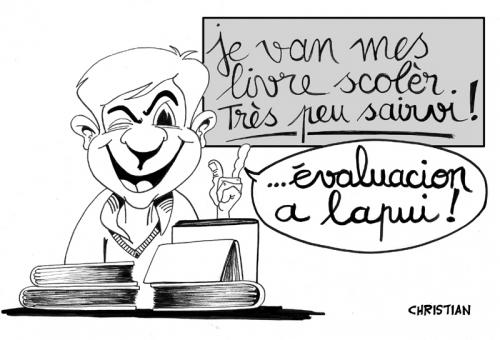Evaluating a work of literature is a hard job if we dislike any kind of readings. Evaluating activity is not only interpreting it but also making a judgement after we read it. A conclusion is made to identify how effectively the work to the reader, in this case, we as readers. The works of literature are made for various purposes and needs. For instance, they are made for enlightenment, education, or even just for entertainment. After we recognize the purpose, we will be able to evaluate it. Here are some guidelines to evaluate:
1.
- Considering how various elements function individually within a work.
We have to recognize a genre of a work of literature, as we know literature genre is divided into prose, drama, poetry. This will make us easier in evaluating the elements since each genre has its own elements. In prose there are plot, character, point of view, setting and theme. We can start asking questions about the elements, whether they are believeable or not. How the story is presented? How the characters as important unit are represented? Who tells the story? Where the story is taking place? What is the theme? Such questions may help us in defining and describing the the elements.
There are important elements in drama such as scenes, acts, dialogues and staging techniques. In drama there are also the shock of recognition, the writing process, the structure of a play, character and change. The shock of recognition can be known when audiences become emotionally involved with the play as if it really happen and true. The writing process is combination of the kind of story, dynamics and structure. Among them all, the feeling comes as the most important thing so that the audiences have same emotions as the writer has during the writing. The structure of a play has several cores which are conflict, climax, and resolution. Character and change where most plays are about changes in the characters and relationship.
In poetry the important elements are rhythms, images, figurative languages, stories in verse, messages-open or hidden. Rhythms, as in music, are based on sounds repetitions that involving either a regular pattern of stressed or unstressed syllables or other sound patterns. Images can be said as sensory experiences such as sight, hearing, and touch. Figurative languages are used by poets to make unexpected connections in seeing daily things. Message sometimes openly stated to readers, but if it doesn’t then the poets want the readers to find it out by ourselves.
2. Deciding whether the literary elements of a work interact to achieve a common goal
Here we can see how the elements are entwined to make the readers comprehend the works.
3. Considering whether a work reinforces or calls into question on the our ideas about the world
During a reading, ideas or descriptions of a life or a world are presented. This will lead us to think about our own world.
4. Considering whether a work is intellectually challenging
Some works tend to make the readers to think in order to comprehend the whole story. It demands some efforts to unlock ideas so that we can gain something.
5. Considering whether a work gives us pleasure
Works of literature can endure until now is caused by a pleasure that they give to the readers. When we choose a work, it is usually because we like or learn something in it. However, such reasons can be used as the based to make an evaluation on the works of literature.
Literature brings pleasure and increases our intellectual, so enjoy the reading and doing the process of evaluations. ^^
Reference:
Carter, Candy, et al. Elements of Literature. 1993. Harcourt Brace Jovanovich Inc. United States of America.
Kirszner, Laurie G. and Mandell, Stephen R. Literature: Reading, Reacting, Writing. 1997. Harcourt Brace College Publishers. United States of America.

Tidak ada komentar:
Posting Komentar